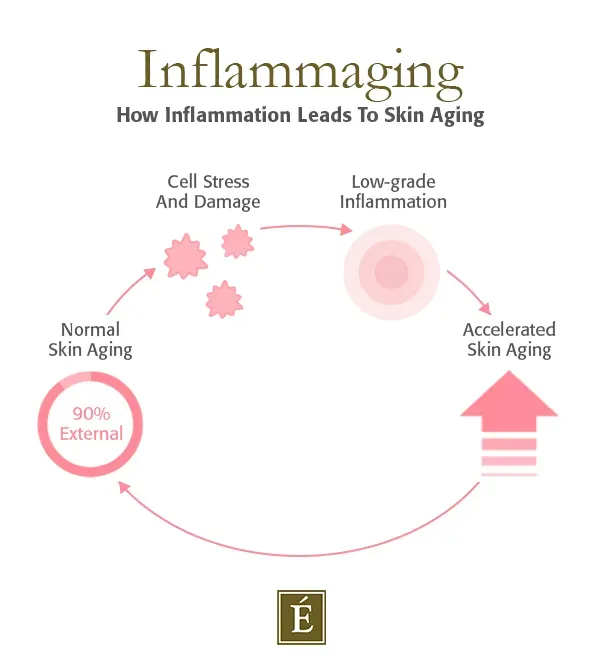Inflammation and aging have long been intertwined in scientific discourse, with many believing that chronic low-grade inflammation, known as “inflammaging,” is an inevitable consequence of the biological aging process. However, emerging research indicates that the relationship may be influenced more by environmental factors rather than merely the passage of time. A groundbreaking study conducted in the Bolivian Amazon reveals a distinct type of inflammation among Indigenous populations that contrasts sharply with urban dwellers, suggesting that lifestyle choices and ecological surroundings significantly shape inflammation levels. As we delve deeper into the dynamics of inflammation and aging, questions arise regarding the validity of our long-held assumptions and the role of a person’s environment in influencing their biological aging process. This revelation could lead to new insights and approaches in the field of aging and health, highlighting the importance of examining the interconnectedness of lifestyle and inflammation.
The ongoing dialogue surrounding the impact of chronic inflammation on the aging process has taken a surprising turn, as researchers explore alternative hypotheses that challenge traditional beliefs. Recent findings suggest that the phenomenon of inflammaging, often attributed to aging, may instead be a reflection of lifestyle choices and environmental influences encountered throughout life. As research expands beyond high-income countries, particularly with studies in areas like the Bolivian Amazon, it becomes increasingly clear that diverse factors shape inflammation responses in different populations. By considering how lifestyle, diet, and environmental conditions contribute to variations in inflammation, a deeper understanding of the biological aging process can emerge. This shift in perspective not only illuminates the complexity of inflammation but also emphasizes the need for a more holistic approach to studying health in the context of aging.
Understanding Inflammaging: The Link Between Inflammation and Aging
Inflammaging is a term that merges ‘inflammation’ and ‘aging’, and it has been traditionally understood as a biological process that exacerbates over time, leading to a myriad of age-related diseases. This concept suggests that chronic, low-grade inflammation becomes a hallmark of aging, contributing to conditions such as arthritis, heart disease, and more. However, emerging research challenges this long-held assumption, suggesting that the connection between inflammation and aging may be more complex than previously thought.
The recent study conducted in the Bolivian Amazon highlights significant differences in inflammation among populations that have minimal exposure to industrialization. Unlike their urban counterparts, individuals in non-industrialized settings experienced inflammation linked to environmental factors like infections rather than chronic disease. This revelation brings to light the need to explore how lifestyle influences inflammation and age-related health, indicating that the aging process may not be universally influenced by inflammation after all.
Frequently Asked Questions
What is inflammaging and how does it relate to the biological aging process?
Inflammaging refers to the chronic, low-grade inflammation that is often considered a hallmark of the biological aging process. It suggests that as we age, our bodies may become more inflamed, potentially leading to various age-related diseases. However, recent studies indicate that inflammation may not be solely linked to aging but influenced significantly by environmental and lifestyle factors.
Are environmental factors influencing aging and inflammation?
Yes, environmental factors play a crucial role in both aging and inflammation. Research indicates that individuals in industrialized environments may experience higher levels of chronic inflammation compared to those in non-industrialized settings. Factors such as diet, exposure to pathogens, and lifestyle significantly affect inflammatory responses and could alter the aging process.
How does lifestyle influence inflammation and aging?
Lifestyle choices, including diet, exercise, and stress management, significantly affect inflammation levels and the aging process. Healthy lifestyles can mitigate the effects of inflammaging by reducing chronic inflammation, thereby potentially decreasing the risk of age-related diseases and extending healthspan.
What were the findings of the inflammation study conducted in the Bolivian Amazon?
The study conducted among Indigenous populations in the Bolivian Amazon found that inflammation patterns differ significantly from those in urbanized populations. Participants displayed inflammation responses tied more to infectious agents than to chronic disease precursors, suggesting that inflammation may not increase with age in these non-industrialized settings, challenging assumptions about the relationship between inflammation and aging.
Can inflammation be considered a universal hallmark of aging across different populations?
Traditionally, inflammation has been viewed as a universal hallmark of aging; however, recent research suggests this may not hold true globally. Findings from studies, including those in the Bolivian Amazon, indicate that inflammation may be heavily influenced by lifestyle and environmental contexts rather than being an inherent part of aging.
What implications do these findings on inflammation and aging have for future research?
The findings suggest that researchers should broaden their understanding of inflammation and aging beyond studies conducted in high-income countries. Future research should aim to explore global variations in inflammatory responses and aging, considering diverse environmental and lifestyle factors to develop a more comprehensive understanding of the biological aging process.
| Key Points | Details |
|---|---|
| Traditional View | Inflammation is seen as a natural part of aging (inflammaging). It is considered a universal characteristic of getting older. |
| New Findings | A study suggests that inflammation may be more influenced by environmental factors and lifestyle rather than aging itself. |
| Source of Data | The analysis was conducted using data from a small Indigenous population in the Bolivian Amazon compared to more urban populations. |
| Key Comparison | Inflammation in non-industrialized areas is tied to infections, while urban populations show inflammation linked to chronic disease. |
| Implications | These findings highlight the importance of considering diet, lifestyle, and environment in understanding inflammation and aging. |
| Expert Insights | Experts warn that the prevalence of inflammaging may be overestimated, mainly based on research from high-income countries. |
Summary
Inflammation and aging have long been perceived as intrinsically linked, with inflammation viewed as an inevitable part of the aging process. However, emerging research indicates that this association may not be as direct as previously thought. The recent study highlights the influence of environmental factors and lifestyle choices on inflammation in comparison to age alone. This calls for a reevaluation of how we understand the relationship between inflammation and aging, particularly considering the vast differences in aging experiences among populations. By acknowledging these variations, we can better address health outcomes related to inflammation as we age.



